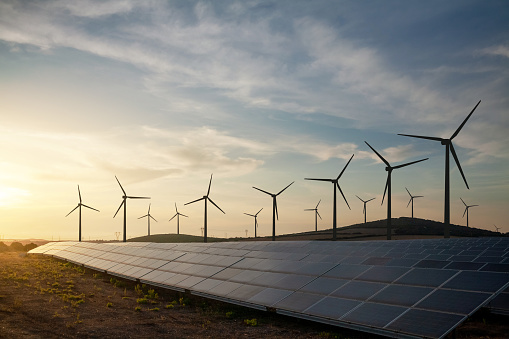Solar power, in particular, has seen significant growth in recent years. Advances in technology have made solar panels more efficient and affordable, and many governments and businesses are now investing in large-scale solar projects to meet their energy needs. In addition to reducing carbon emissions, solar power also offers benefits such as reduced reliance on traditional power grids and greater energy independence.
Wind power is another rapidly growing area of renewable energy. Wind turbines generate electricity by harnessing the power of the wind, which is a clean and abundant energy source. Like solar power, wind power offers numerous benefits, including reduced carbon emissions and greater energy independence.
Hydroelectric power is a third form of renewable energy that utilizes the power of water to generate electricity. Hydroelectric power plants typically use dams or other structures to harness the energy of flowing water, which is then used to turn turbines and generate electricity. While hydroelectric power is not without its environmental drawbacks (such as the impact of dams on fish populations and river ecosystems), it remains a key source of clean and renewable energy.
What are examples of Green tech outside the energy space?
Green technology has many applications including transportation solutions. Electric vehicles (EVs) are one of the most prominent examples of green technology in the transportation sector. EVs are powered by electricity, which can be generated from renewable sources such as solar or wind power. EVs produce no tailpipe emissions, making them a much cleaner alternative to traditional gasoline-powered vehicles. Additionally, many EVs now offer long driving ranges and fast charging times, making them a practical option for many drivers.
Another area of sustainable transportation is public transit. Buses and trains that run on clean energy sources such as electricity or hydrogen fuel cells can significantly reduce carbon emissions compared to traditional diesel-powered vehicles. Additionally, many cities are investing in bike lanes and other infrastructure to promote active transportation options such as cycling and walking.
Green technology also includes sustainable building construction practices. Energy-efficient buildings can significantly reduce energy consumption and associated carbon emissions. Building features such as high-performance insulation, efficient heating and cooling systems, and energy-saving lighting can all contribute to a building’s energy efficiency. Additionally, buildings that are constructed with sustainable materials (such as recycled or locally sourced materials) can help reduce the environmental impact of construction.
Waste management is another important area of green technology. Landfills and other waste disposal methods can be significant sources of greenhouse gas emissions, as decomposing waste produces methane, a potent greenhouse gas. Sustainable waste management practices such as recycling and composting can help reduce the amount of waste that goes to landfills, thereby reducing associated greenhouse gas emissions. Additionally, many waste-to-energy facilities are now being built that can generate electricity from waste materials such as municipal solid waste and sewage sludge.
Would I recognize any green technology companies?
Yes, many of the world’s biggest companies create green technology. Examples include:
- Tesla: Tesla is a leading electric vehicle and renewable energy company. The company produces a range of electric vehicles, including the popular Model S, Model 3, and Model X, and is also involved in the production and installation of solar panels and energy storage solutions.
- Vestas: Vestas is a leading manufacturer of wind turbines and a key player in the renewable energy industry. The company produces a range of wind turbines for both onshore and offshore applications and has installed turbines in more than 80 countries around the world.
- Siemens: Siemens is a multinational conglomerate that is involved in a range of industries, including energy, transportation, and healthcare. The company is a leading producer of wind turbines and is also involved in the development of renewable energy technologies such as hydrogen fuel cells and energy storage solutions.
- GE Renewable Energy: GE Renewable Energy is a division of General Electric that focuses on the development and deployment of renewable energy technologies. The company produces a range of wind turbines and also offers solutions in the areas of solar power, hydroelectric power, and energy storage.
- First Solar: First Solar is a leading manufacturer of thin-film solar modules and is one of the largest solar companies in the world. The company produces solar panels for both residential and commercial applications and also offers energy storage solutions.
- Enphase Energy: Enphase Energy is a renewable energy company that specializes in microinverter technology. The company’s microinverters are designed to optimize the performance of solar panels and enable greater energy production from each panel.
- Neste: Neste is a Finnish company that produces renewable diesel and other renewable fuels. The company is committed to reducing the carbon footprint of the transportation sector and has set a goal to become carbon neutral by 2035.
- Bloom Energy: Bloom Energy produces solid oxide fuel cells that generate electricity with a lower carbon footprint than traditional power sources. The company’s fuel cells can be used in a range of applications, including backup power, microgrids, and electric vehicle charging stations.
In this article, we explained what green technology is, how it encompasses renewable energy, as well as several companies working in the space. Stay tuned for future articles on green technology as we explore it in greater depth.
Renewable Energy and Energy Storage Are Key to New York’s Clean Energy Future
Credit: Source link


Comments are closed.